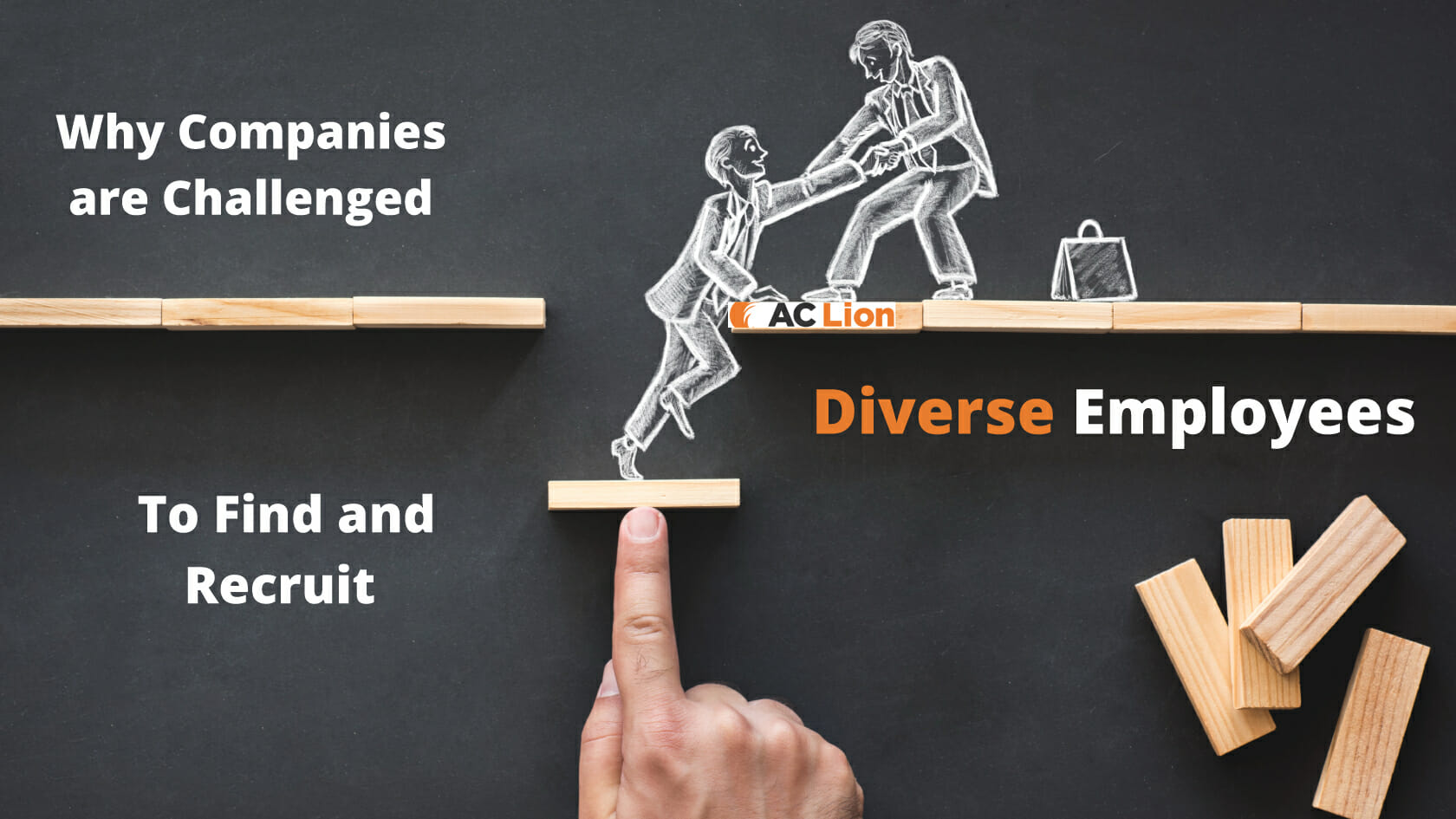Why Companies are Challenged to Find and Recruit Diverse Employees


Diversity matters for many reasons and savvy employers know this. They recognize the value that diversity brings in terms of employee innovation and insights. And they know that today’s employees themselves value diversity and favor companies that reflect the diversity of the world we live in. Unfortunately, despite their commitment to building a diverse workforce many employers struggle to find and retain diverse staff members. Here we take a look at why companies are challenged to build a diverse workforce, you can see the others parts why diversity in hiring is important and best practices for attracting and retaining diverse workers.
Why Companies are Challenged to Find and Recruit Diverse Employees
Most companies today would be quick to say that they recognize the importance of hiring diverse employees for a wide range of reasons. Yet many are challenged to take the right steps to increase the diversity of their targeted talent pool and to bring more diverse candidates on board.
Identifying root causes can help.
Rooting Out the Root Causes Impacting Diversity
Yinnan Shen teaches Managing and Cultivating Cultural Differences at Columbia University and is an associate at the Logos Consulting Group, a corporate responsibility and crisis management/ strategic communication firm. “If we want to see diversity and inclusion more prominent when hiring, the key is to get to the bottom of why it hasn’t been more prominent before,”
Shen says. “The root cause can almost always be traced back to the people who make decisions. Is the leadership heterogeneous? Are diverse voices and perspectives included in planning processes? If not, a good starting point is to make sure that you have diverse voices in the room where decisions are made.”
It can be helpful to conduct an audit of hiring practices from the time an open position is announced, to the application process, selection of interviews, interviews and offers. There are many steps in this process and, along the way potentially many missteps that can chip away at the potential pool of candidates—especially those from diverse and marginalized populations.
Once identified, of course, steps need to be taken to remove the barriers and make improvements to the process to draw a more diverse pool of candidates.
Identifying Unconscious Biases
Unconscious biases are the beliefs and feelings we all have that can negatively impact the decisions we make. This is certainly true in hiring. If we believe that only men can hold certain types of positions that will negatively impact our ability to build a diverse field of candidates for those positions.
If we believe that members of an older population demographic are not adept with technology that can limit the applicants, we consider for technology-related positions. And, of course, if we believe that candidates from a wide range of racial, ethnic, and socioeconomic backgrounds simply wouldn’t be a good “fit” for our organizations, we’ve built barriers that can be hard to knock down.
Since unconscious biases are just that—unconscious—they tend to be pervasive and damaging to DEI efforts of any kind. Opening up employees’ eyes, and especially employees in HR, management and hiring team roles, is a critical step to held drive out misconceptions that can be limiting consideration of potentially very skilled and highly qualified candidates for a wide variety of roles.
But identification of the potential for, and existence of, these biases is just the first step. Once identified, changes need to be made to make the recruiting and hiring process more inclusive.
Failing to Make Necessary Changes
The old saying “if you always do what you’ve always done, you’ll always get what you’ve always got,” certainly applies to the recruitment of diverse talent. Those companies that bemoan their lack of diversity—or face negative backlash because of it—should start by taking a look at their hiring practices and considering how what they’re doing, or not doing, is impacting their ability to attract a diverse talent pool.
“Many of our ways of thinking about candidate searching is archaic – looking for the same titles, schools, locations, years of experience, etc.,” says Jennifer Reid, AC Lion’s Director of Diversity, and Inclusion Lead. “We can’t start hiring differently until we start searching and vetting candidates differently,” she says.
There are, says Reid and others, a number of other reasons why companies fail to be successful in finding and hiring diverse candidates.
Filling the Pipeline From the Bottom Up
One common misstep, says Reid, is starting at the bottom instead of the top. “Why would an entry-level diverse candidate choose to join an organization where none of the leadership or hiring team is diverse, especially when there are so many other choices available?,” she asks. It’s an important point. If your leadership team doesn’t represent the diversity you hope to draw to your organization, your attempts to bring people in on the front lines are likely to fail.
Working at Cross-Purposes
In some cases, organizational “must have’s” are at cross-purposes, says Reid. “You can’t say that diversity hiring is a priority but that you still must have candidates from Ivy League schools.” Many of those schools, she says, “have been exposed for their historically anti-diverse acceptance practices.” They simply won’t have the number of candidates required to help companies fill their top talent pipeline with diverse candidates.
The type of company you’re recruiting for—and the types of positions you’re hoping to fill—will also have an impact on your success in finding diverse candidates. For instance, Reid says, diversity can be hard to find in tech roles.
Failing to Cast a Wider Net
A “silver lining” from the pandemic, says Yolanda Chase is Chief Diversity Officer for the Washington Technology Industry Association, “is the ability to hire anyone, from anywhere.” Organizations have an opportunity, she says, to “hire more diverse workforces, as they are free form the constraints of recruiting in one geographic market. That’s an important opportunity but one that needs to be recognized and acted upon.
In addition, Chase says, “far too many organizations think of their DEI efforts as existing solely within the corporate social responsibility or human resources departments, rather than weaving it into all aspects of the organization and the external communities in which they operate.” DEI recruitment strategies work best, she says, “when diversity goals and intentions are clear and coherent to all stakeholders.”
